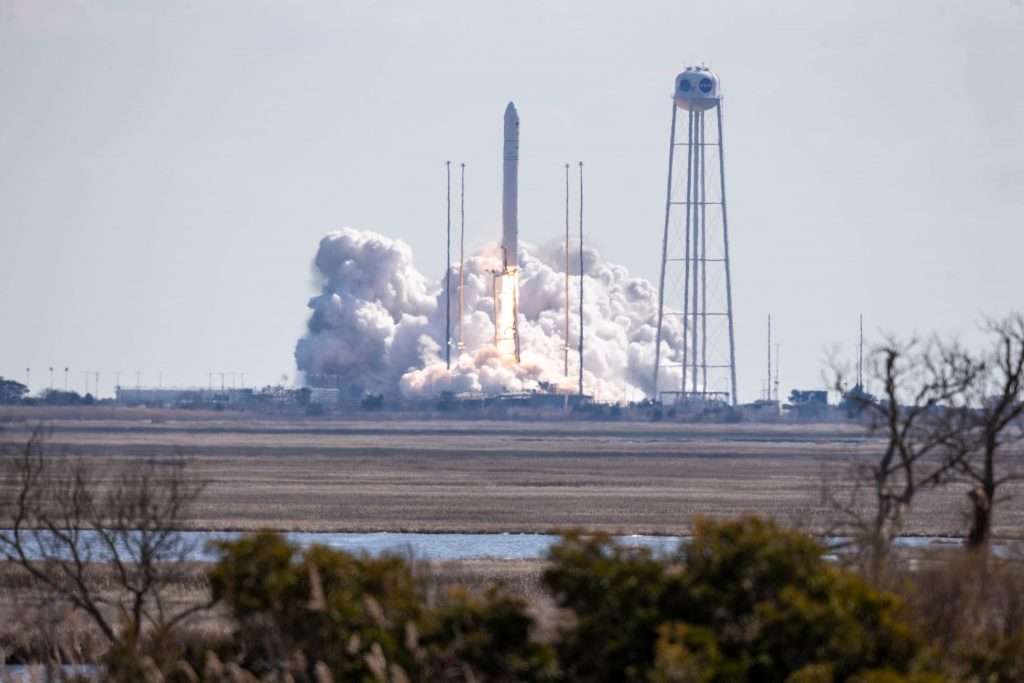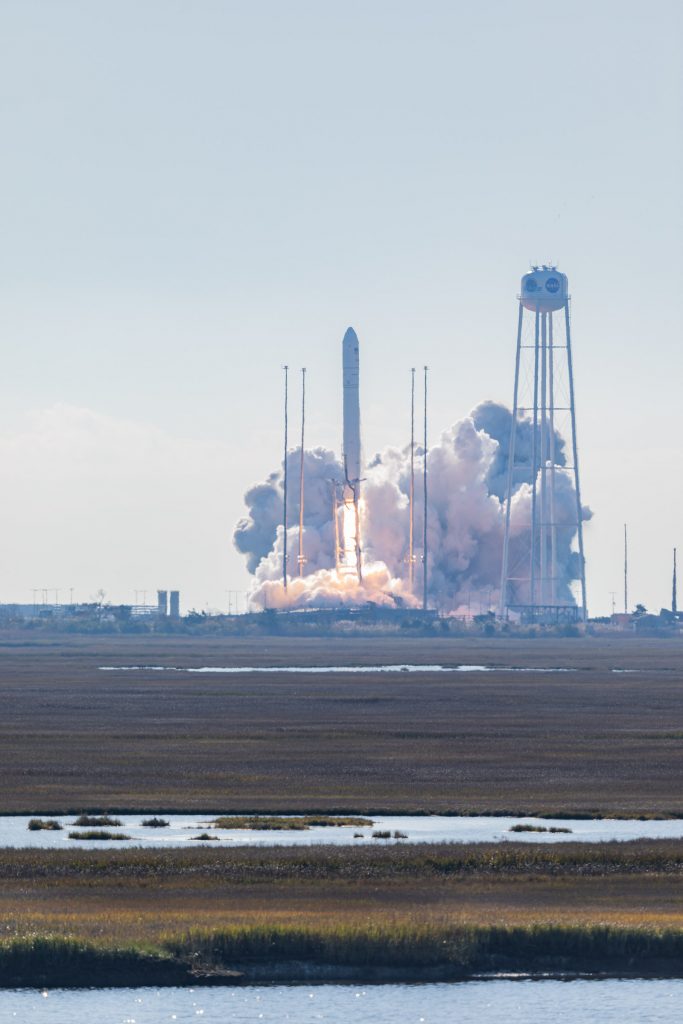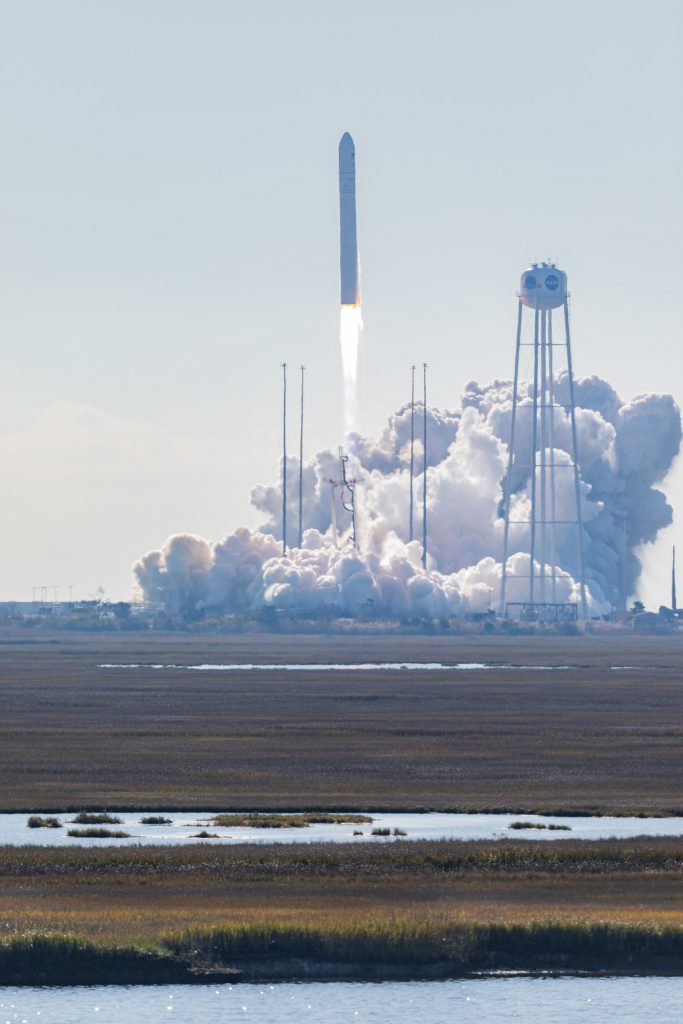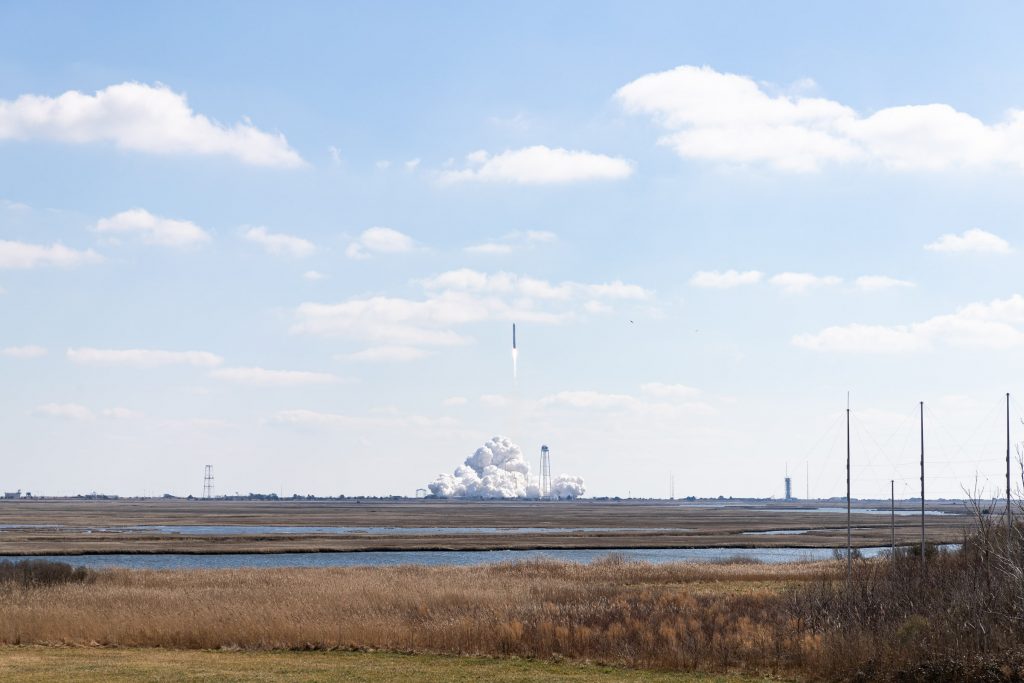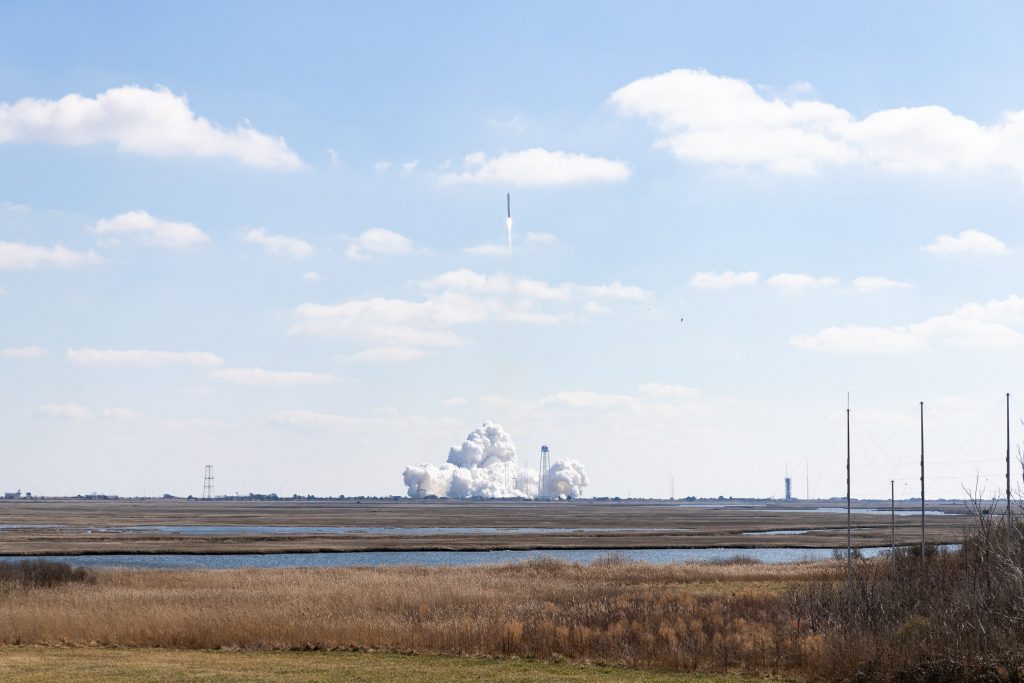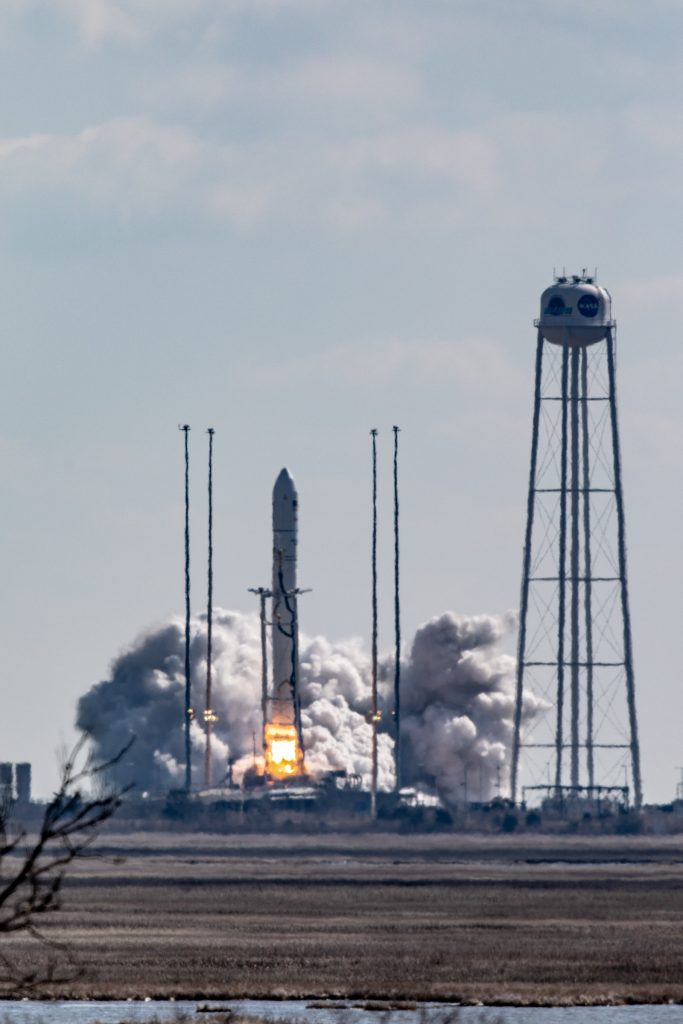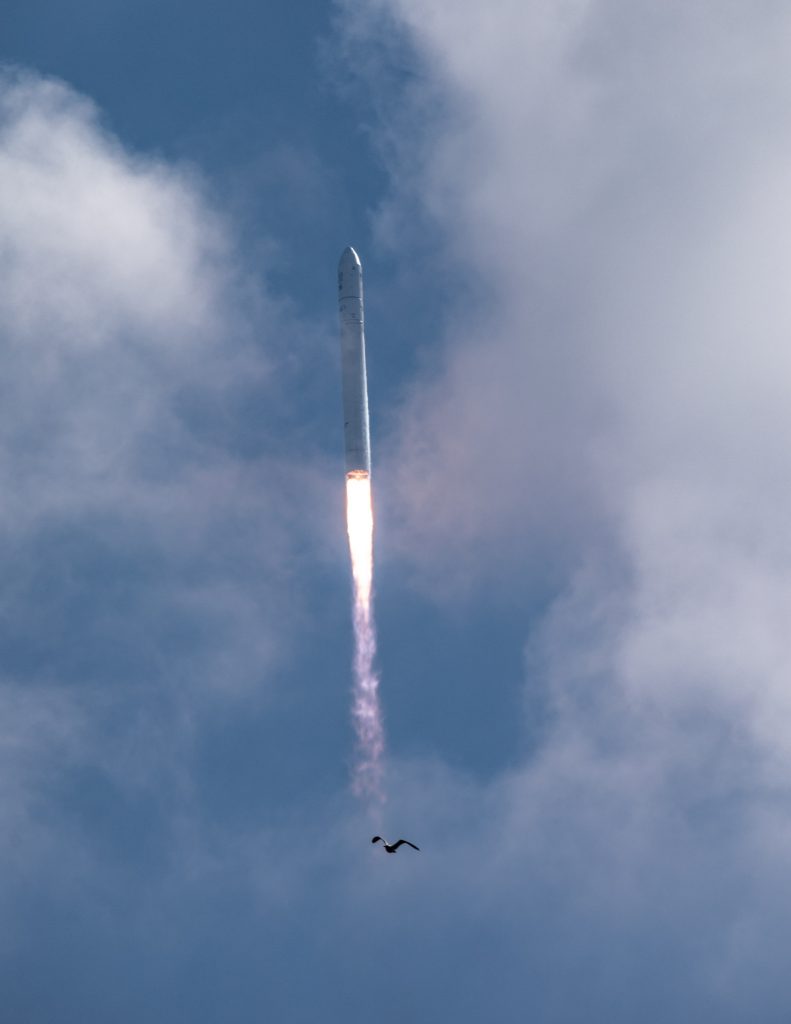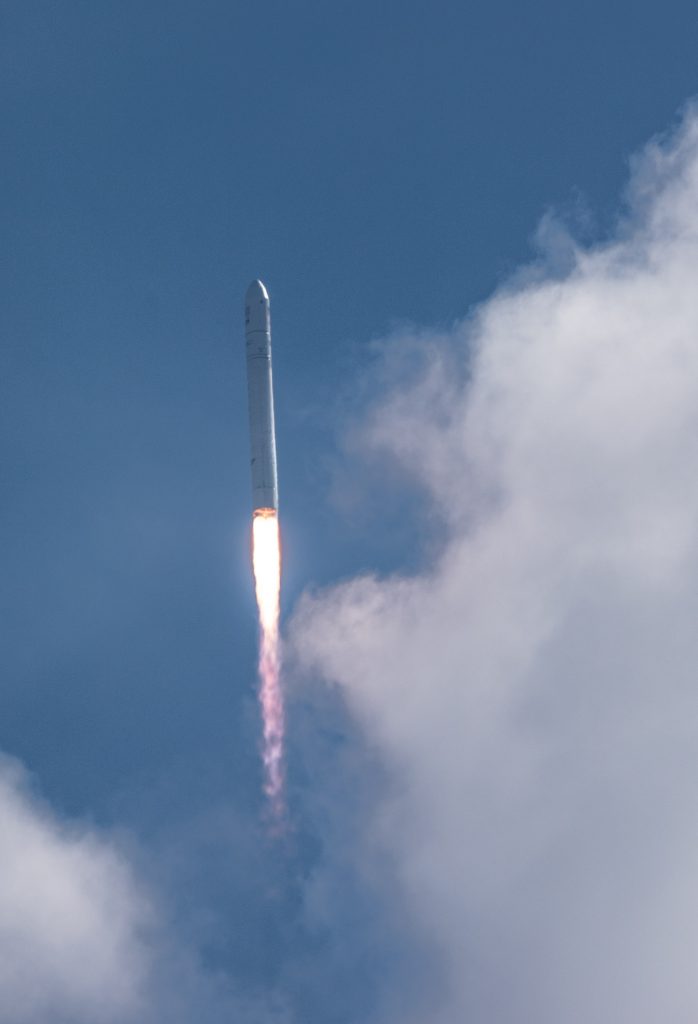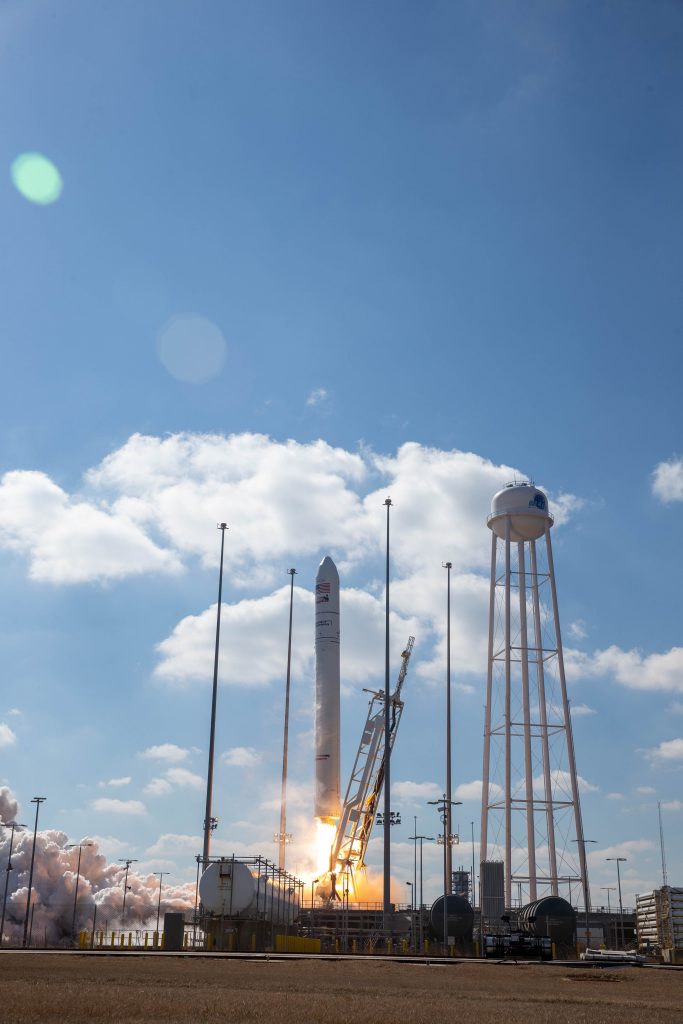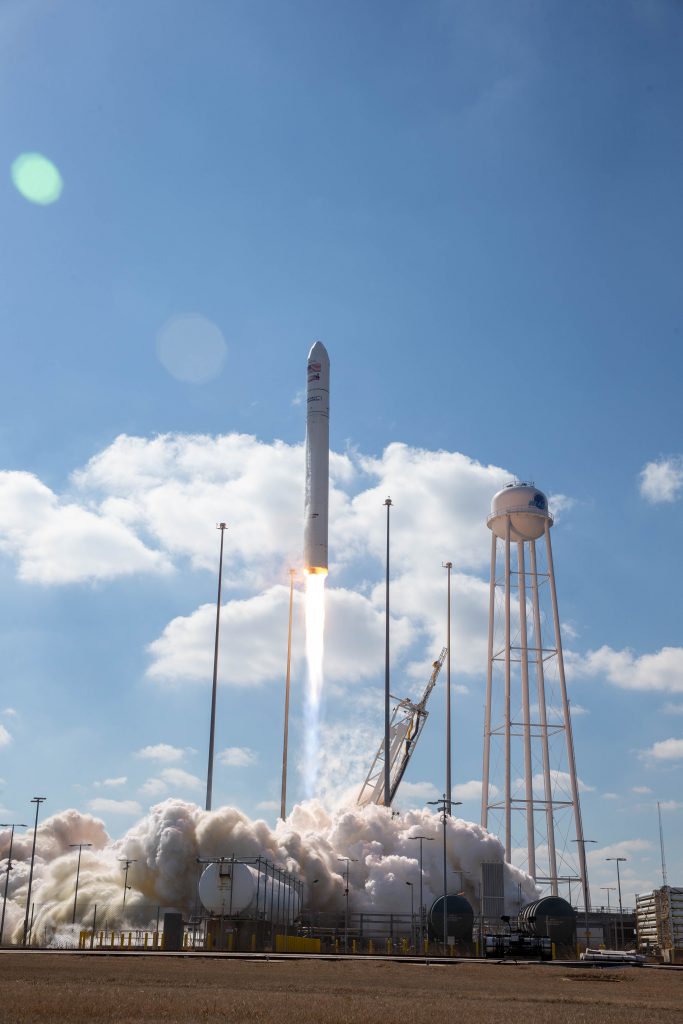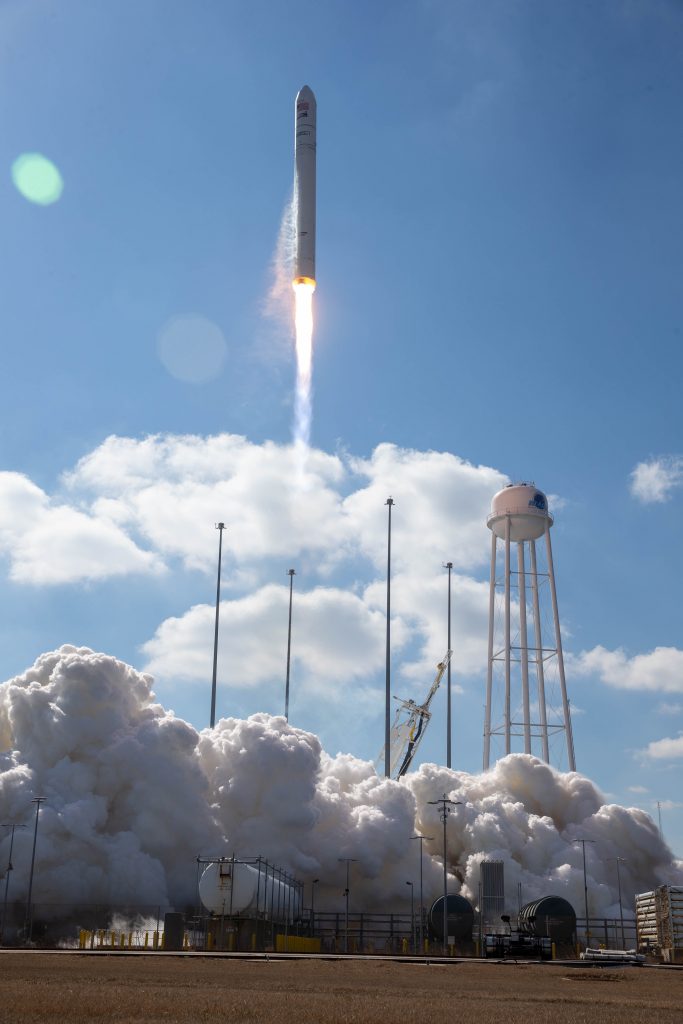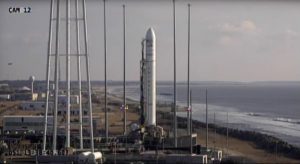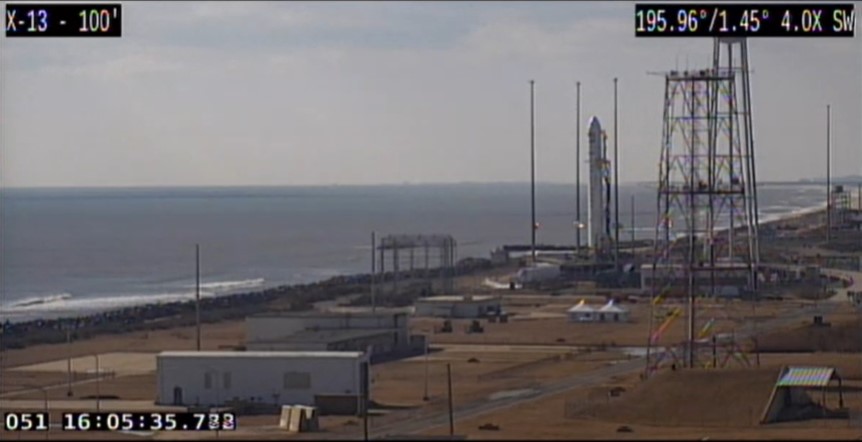The solar arrays have successfully deployed on Northrop Grumman’s Cygnus cargo spacecraft that is on its way to deliver approximately 8,000 pounds of scientific investigations, cargo, and supplies to the International Space Station after launching at 12:36 p.m. EST Saturday from NASA’s Wallops Flight Facility on Wallops Island in Virginia.
More Northrop Grumman CRS-15 mission imagery from NASA on Flickr
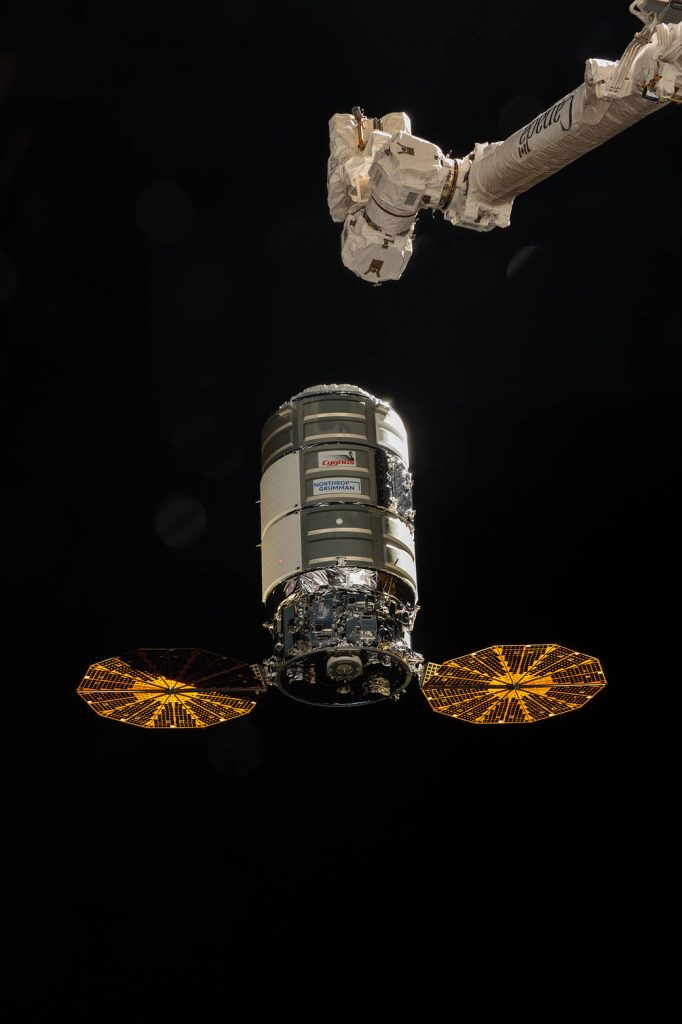
Coverage of the spacecraft’s approach and arrival to the orbiting laboratory will begin Monday, Feb. 22, at 3:00 a.m. EST on NASA Television, the NASA app, and the agency’s website. Arrival at station is expected in the 4 a.m. hour, EST.
Japan Aerospace Exploration Agency astronaut Soichi Noguchi will capture Cygnus, and NASA astronaut Michael Hopkins will be acting as a backup. After capture, the spacecraft will be installed on the Unity module’s Earth-facing port. NASA TV coverage of the spacecraft’s installation will begin Monday, Feb. 22, at 6 a.m. EST.
This delivery is Northrop Grumman’s 15th contracted cargo flight to the space station and will support dozens of new and existing investigations.
Included aboard Cygnus for delivery to the space station:
A life support upgrade
The Environmental Control and Life Support System (ECLSS) is a crucial element of regenerative life support hardware that provides clean air and water to the space station crew. Current systems enable recovery of about 93% of the water and water vapor on the station. The system will get an upgrade thanks to the Exploration ECLSS: Brine Processor System. This investigation demonstrates technology to recover additional water from the Urine Processor Assembly. The brine processor’s dual membrane bladder allows water vapor to pass through while filtering out the brine and the majority of contaminants. Long-duration crewed exploration missions require about 98% water recovery, and this technology demonstration in brine processing will help achieve this goal. This Brine Processor System plans to close this gap for the urine waste stream of the space station.
A new vision
Millions of people on Earth suffer from retinal degenerative diseases. These conditions have no cure, although treatments can slow their progression. Artificial retinas or retinal implants may provide a way to restore meaningful vision for those affected. In 2018, startup LambdaVision sent their first experiment to the space station to determine whether the process used to create artificial retinal implants by forming a thin film one layer at a time may work better in microgravity.
Protein-Based Artificial Retina Manufacturing builds on the first project, evaluating a manufacturing system that uses a light-activated protein to replace the function of damaged cells in the eye. This information may help LambdaVision uncover whether microgravity optimizes production of these retinas, and could assist people back on Earth.
I dream of space
Strapped inside sleeping bags, astronauts often report getting a better night’s sleep during their stays aboard the space station than when lying on a bed on Earth. The ESA (European Space Agency) Dreams experiment will provide a quantitative look at these astronaut sleep reports. When crew members get ready for bed, they will add another step: donning a sleep monitoring headband. The investigation serves as a technology demonstration of the Dry-EEG Headband in microgravity while also monitoring astronaut sleep quality during a long-duration mission. Raw data will be available to scientists for analysis, and the crew can input direct feedback on their sleep via an application on a tablet. Sleep is central to human health, so a better understanding of sleep in space provides a more comprehensive picture of human health in microgravity.
Preparing for the Moon
The International Space Station serves as a testing ground for technologies we plan to use on future Artemis missions to the Moon. The NASA A-HoSS investigation puts to the test tools planned for use on the crewed Artemis II mission that will orbit the Moon. Built as the primary radiation detection system for the Orion spacecraft, the Hybrid Electronic Radiation Assessor (HERA) was modified for operation on the space station. Verifying that HERA can operate without error for 30 days validates the system for crewed Artemis mission operations. A related investigation, ISS HERA, flew in 2019 aboard the space station. ISS HERA provided data and operational feedback in preparation for the Orion spacecraft’s uncrewed Artemis I mission that will launch in 2021.

